Julian G. Rosenman
A Surface-normal Based Neural Framework for Colonoscopy Reconstruction
Mar 13, 2023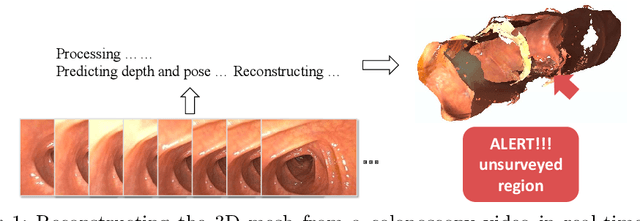

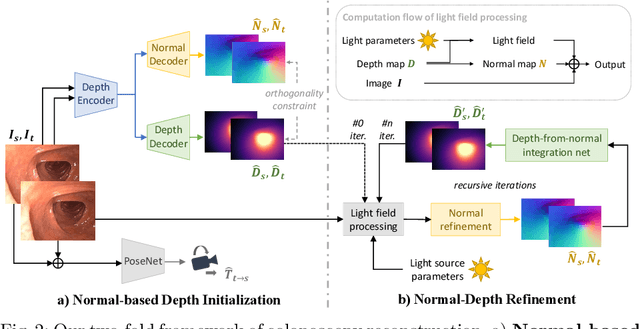
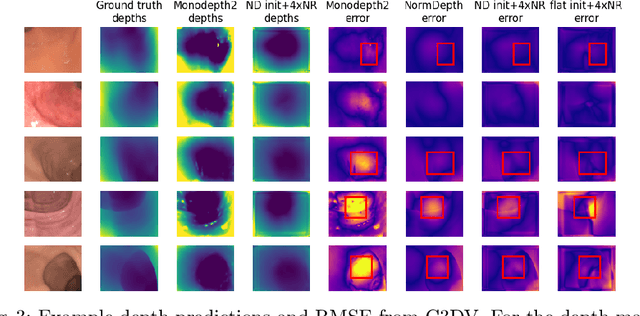
Abstract:Reconstructing a 3D surface from colonoscopy video is challenging due to illumination and reflectivity variation in the video frame that can cause defective shape predictions. Aiming to overcome this challenge, we utilize the characteristics of surface normal vectors and develop a two-step neural framework that significantly improves the colonoscopy reconstruction quality. The normal-based depth initialization network trained with self-supervised normal consistency loss provides depth map initialization to the normal-depth refinement module, which utilizes the relationship between illumination and surface normals to refine the frame-wise normal and depth predictions recursively. Our framework's depth accuracy performance on phantom colonoscopy data demonstrates the value of exploiting the surface normals in colonoscopy reconstruction, especially on en face views. Due to its low depth error, the prediction result from our framework will require limited post-processing to be clinically applicable for real-time colonoscopy reconstruction.
ColDE: A Depth Estimation Framework for Colonoscopy Reconstruction
Nov 19, 2021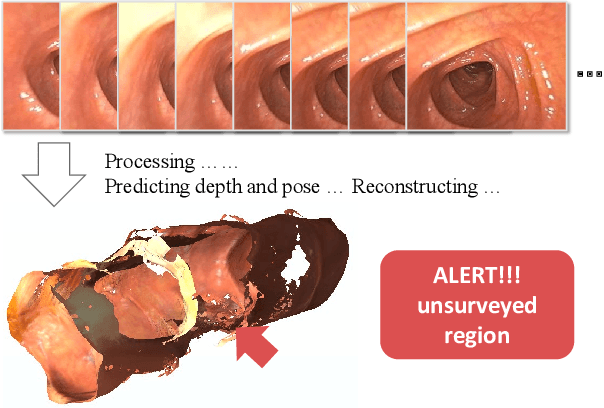

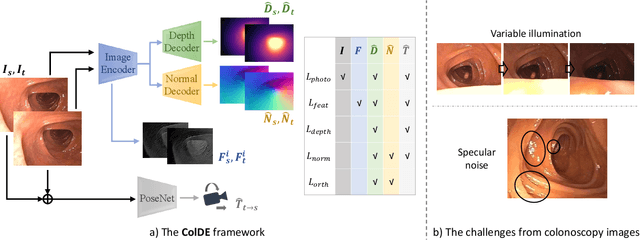

Abstract:One of the key elements of reconstructing a 3D mesh from a monocular video is generating every frame's depth map. However, in the application of colonoscopy video reconstruction, producing good-quality depth estimation is challenging. Neural networks can be easily fooled by photometric distractions or fail to capture the complex shape of the colon surface, predicting defective shapes that result in broken meshes. Aiming to fundamentally improve the depth estimation quality for colonoscopy 3D reconstruction, in this work we have designed a set of training losses to deal with the special challenges of colonoscopy data. For better training, a set of geometric consistency objectives was developed, using both depth and surface normal information. Also, the classic photometric loss was extended with feature matching to compensate for illumination noise. With the training losses powerful enough, our self-supervised framework named ColDE is able to produce better depth maps of colonoscopy data as compared to the previous work utilizing prior depth knowledge. Used in reconstruction, our network is able to reconstruct good-quality colon meshes in real-time without any post-processing, making it the first to be clinically applicable.
Lighting Enhancement Aids Reconstruction of Colonoscopic Surfaces
Mar 18, 2021


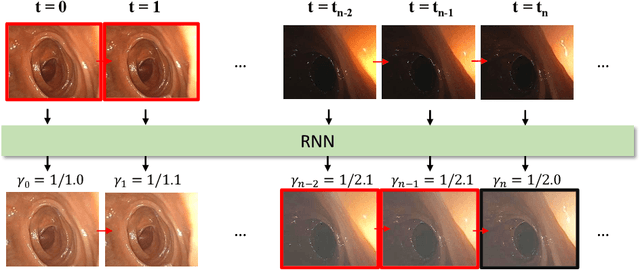
Abstract:High screening coverage during colonoscopy is crucial to effectively prevent colon cancer. Previous work has allowed alerting the doctor to unsurveyed regions by reconstructing the 3D colonoscopic surface from colonoscopy videos in real-time. However, the lighting inconsistency of colonoscopy videos can cause a key component of the colonoscopic reconstruction system, the SLAM optimization, to fail. In this work we focus on the lighting problem in colonoscopy videos. To successfully improve the lighting consistency of colonoscopy videos, we have found necessary a lighting correction that adapts to the intensity distribution of recent video frames. To achieve this in real-time, we have designed and trained an RNN network. This network adapts the gamma value in a gamma-correction process. Applied in the colonoscopic surface reconstruction system, our light-weight model significantly boosts the reconstruction success rate, making a larger proportion of colonoscopy video segments reconstructable and improving the reconstruction quality of the already reconstructed segments.
 Add to Chrome
Add to Chrome Add to Firefox
Add to Firefox Add to Edge
Add to Edge